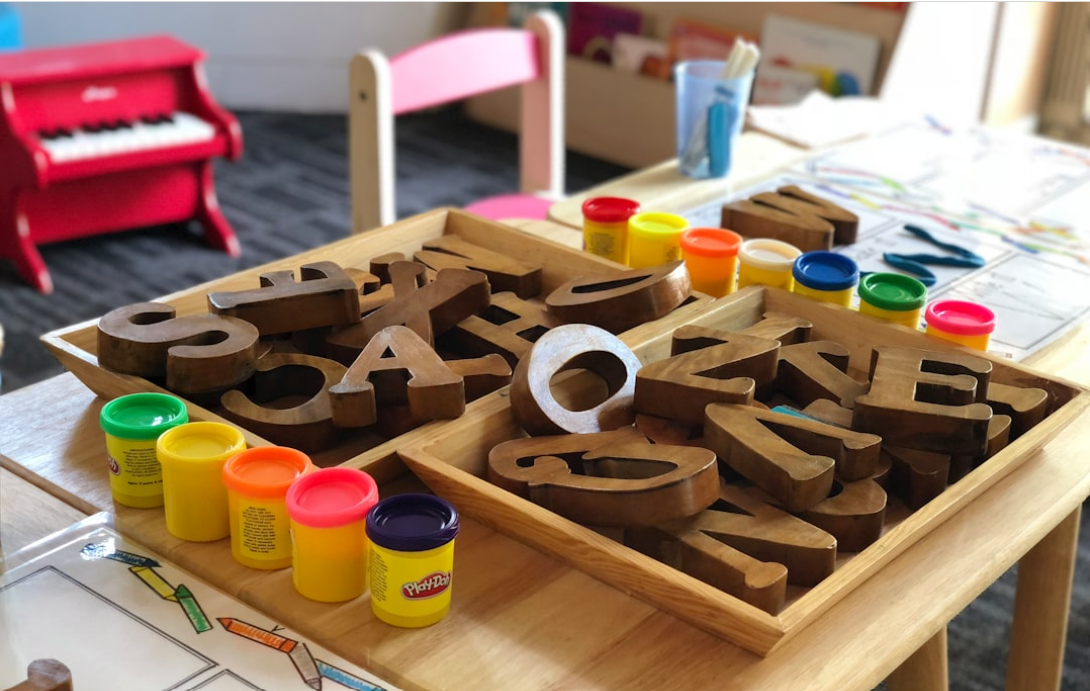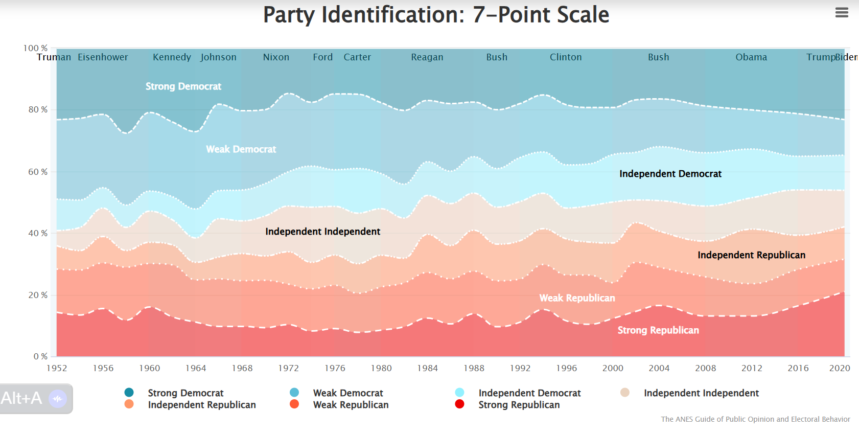
Developing consensus on what is meant by “high-quality” may not be as complicated as it sounds. Let’s start there.
When it comes to caring for young children and their education, the gulfs regarding best practices, rights and wrongs, and how to define success are as yawning as the divide in the Great Rift Valley.
However, when great childcare begins to disappear, the outpouring from families and communities belies the consensus we share – regardless of our political orientation.
Here in the Fredericksburg region, the announcement that Kids Station would be closing unified the community around saving what is generally recognized as one of the better childcare facilities in our area. Mary Washington Healthcare and the parent company that operates Kids Station pivoted 180-degrees, publicly apologized, and agreed to keep the center open until a better solution could be found. (With the pending expansion of Snowden House, however, new questions have emerged about Kids Station’s future.)
If loss can unite us, why is it so difficult to find a way to address the problem?
The answer to that, unsurprisingly, is complicated.
Defining ‘High-Quality’
Defining what constitutes a high-quality childcare experience is fraught with difficulties.
The one metric that people default to when looking at anything having to do with academics – test scores, longitudinal data sets, and meta-studies – deliver mixed messages.
A 2022 report from the Economist found that while there are plenty of success stories about the impact of early-childhood education, there are important counter-balances.
“A meta-analysis of 22 experiments conducted between 1960 and 2016 shows that children who were enrolled in preschool were less likely to need special-education services or repeat years and graduated from high school at higher rates. But the improvements were small. One study published in 2021 of programmes in Boston found that attending preschool did not affect test scores in adolescence but did boost high-school graduation and college attendance.” -The Economist, Feb. 2, 2022
Other meta-analyses are more optimistic about the impact of high-quality childcare. A 2023 meta-study by the Office of the Administration for Children & Families, for example, found that:
“The benefits of high-quality ECE for the child often last into kindergarten, and some studies show lasting effects into middle school and high school. The quality of later schooling that a child experiences can either build upon or counteract these benefits. Even though evidence for long-term effects of ECE on child development is mixed, some studies show that participating in high-quality ECE yields long-term advantages for individuals and for society, including higher educational attainment, better adult health, and less involvement in crime.”
Even here, however, the study softens as it discusses the long-term effects of high-quality early-childhood education. In short, tracing long-term effects via traditional testing methods, while not unbeneficial, has its limits.
Part of the problem is wrapped up in defining “high-quality.”
The American Academy of Pediatrics has made some progress in this area, and argues that our understanding of what constitutes high-quality childcare is becoming clearer as research measures and the breadth of research grows.
The definition of quality in ECE is becoming more evidence based as newer, validated measures become available. State licensing standards have been the traditional benchmarks, but they set a minimum standard that is typically considerably less than the recommendations of health and safety experts. National organizations including the AAP, the American Public Health Association, and the National Association for the Education of Young Children have developed standards and voluntary systems of accreditation that are often more robust than state licensing regulations. The publication Caring for Our Children, Third Edition21 includes evidence-based practice standards for nutrition, safety, hygiene, staff-to-child ratios, and numerous other subjects that have been shown to improve the quality of child care. –The American Academy of Pediatrics, August 2017
What is most compelling about the AAP study are the indicators of successful childcare. Most of the ones the AAP study identifies would fall in line with what many would consider “commonsense” matters: infection control, good nutrition, a clean and healthy environment, physical activity, injury prevention, emergency procedures.
It’s not uncommon when talking to parents searching for good childcare to hear that they’ve walked into facilities – whether home-based, church-based, for-profit, or non-profit – and just as quickly walked out because these commonsense items are not in sight.
This helps explain the very public reaction to the situation between Kids Station and MWHC. When a daycare that has a track record of meeting commonsense standards is shuttered, the reality that finding a comparable center to place your child will be challenging sets in.
Declining Daycare
The trouble finding daycare is tied to a number of problems. One is simple space.
In our February 16 story, “The Childcare Crisis Is Here,” one parent summed up the shortage of available daycare succinctly
“My husband spent the whole morning today on the phone,” Wendy Thomas, a mother of two said after the announcement that Kids Station was closing, said. “He called all the way around town and was told summer care (for their 6-year-old) will be extremely difficult and that we may be able to get the 4-year-old into care in the fall. But at this point, nothing is available in May.”
MWHC, in an attempt to help affected families, put together a spreadsheet of available child care centers in the area that did more to highlight the difficulties families face than it did to help alleviate the fears families face daily.
“There were twenty-two providers on the list,” we reported. “Of those, one is recently opened and looks to potentially have a significant number of slots. Other locations were reporting possible openings in May, waiting lists, or were only able to take certain age groups. Seven are not currently accepting new people.”
Families are constrained by more than open spaces, however. Cost is another factor.
A recent report by JLARC, “Virginia’s Self-Sufficiency Programs and the Availability and Affordability of Child Care,” found that childcare is unaffordable for 85% of families with infants, 82% of families with toddlers, and 74% of families with preschoolers.
The situation is even worse for low-income families. Just 2% of these families with infants and toddlers, and 3% of these families with preschoolers could shoulder the costs of day care.
Sen. Tim Kaine last year made a push for more funding and support for child care through two bills: S.1354 – Child Care for Working Families Act and S.2777 – Child Care Stabilization Act, both of which have stalled.
Not Just about ‘The Children’
Further complicating this story is the reality that quality childcare is wrapped up in more than making sure children have the best possible experience growing up.
There are very real impacts relating to adult employment and our overall economy.
This tension has always been with us, but the pandemic has exasperated the problem significantly. Though it was popular for some businesses to blame post-pandemic hiring woes on people some felt had become “lazy” or dependent on “government handouts,” the reality is that the cost of daycare, as well as the shortage of daycare seats, was more to blame.
Writing in the Virginian Pilot, Barry Duvall and Mike Petters noted that:
The crisis has disproportionately impacted women, who make up the overwhelming majority of workers who are involuntarily working part-time due to child care challenges. These adverse impacts on working mothers skyrocketed as a result of the COVID-19 pandemic, with nearly 2 million women leaving the labor force since the start of the pandemic.
No Panacea
Fixing the childcare problem will not by itself fix our workforce shortage, academic achievement gaps, or family poverty. However, because childcare sits at the nexus of all these issues, failing to address it will leave ensure we struggle more than we need to in these areas.
Tensions between government leaders like Kaine, who backs Big Government solutions, and more-conservative organizations like the Heritage Foundation that worry Big Government will limit family options, and that free-market options are the better route to go, are sure to continue.
Both sides have solid facts on their sides, and reason to be skeptical of the philosophical principles underlying their opponents’ ideas.
The reality is it’s going to take a broad cross-section of approaches to address the complex issues before us.
Perhaps we can begin by pointing to what we can agree on – many of the “high-quality” indicators outlined in the AAP study.
At least then we’re pulling in the same direction on a problem that can be solved.





